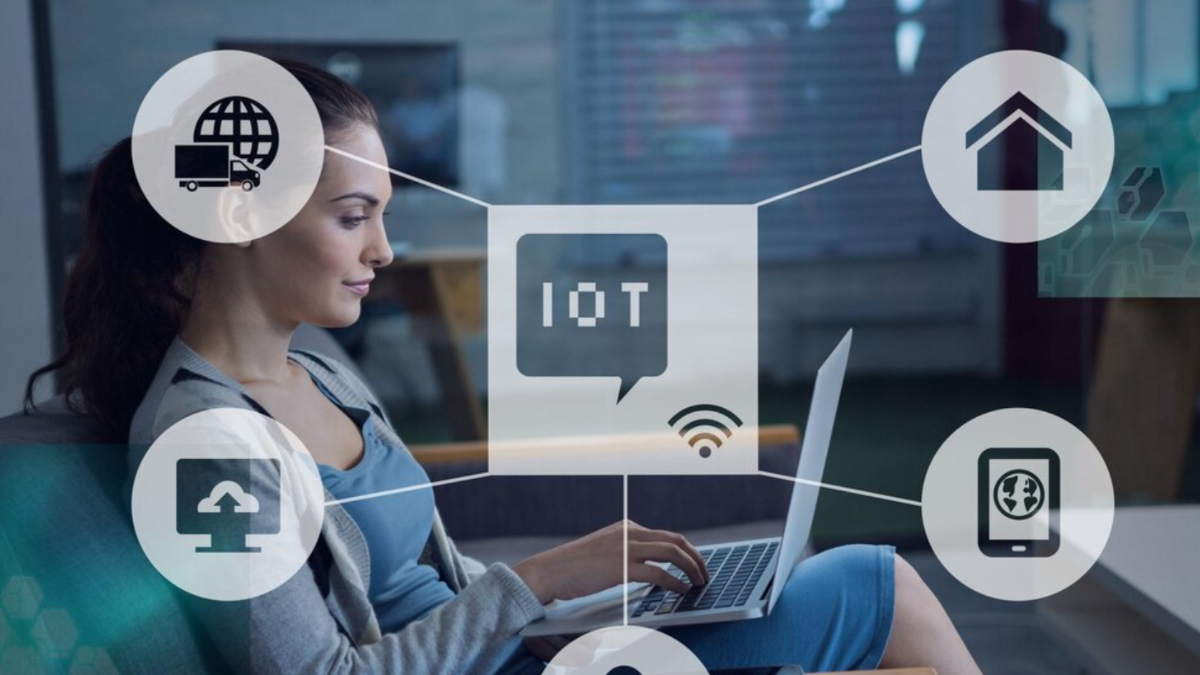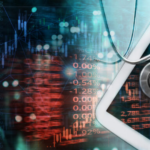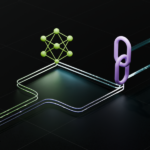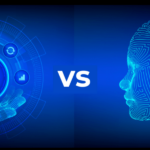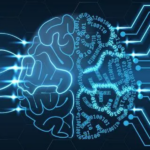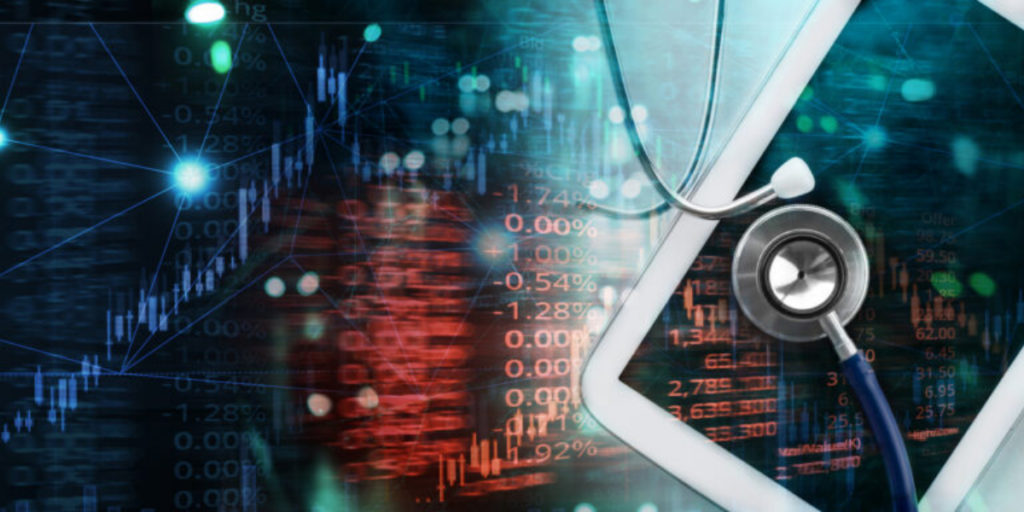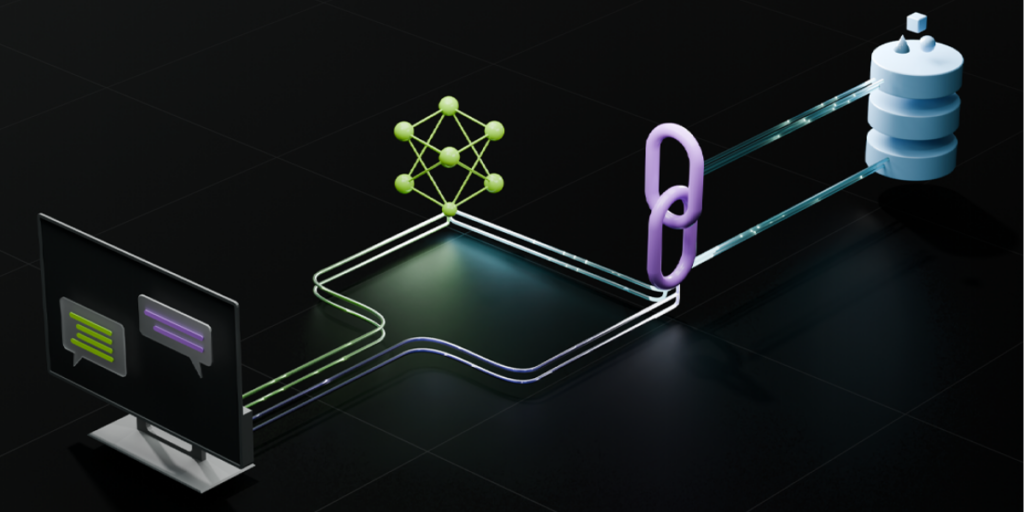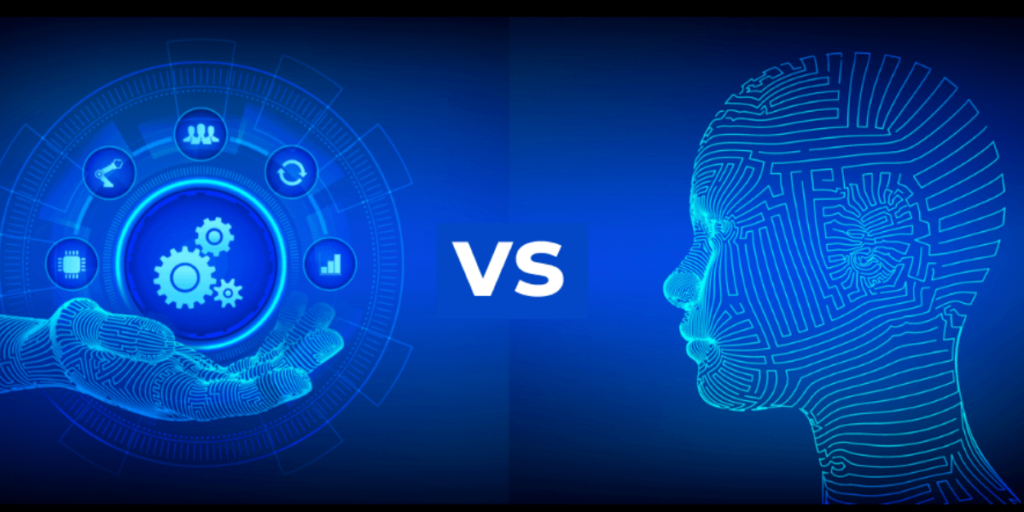The number of devices connected to IoT devices has increased dramatically in the past few years. It is said that there are almost the same number of IoT devices as the total number of people worldwide. IoT product development combines the heterogeneous stack of hardware, software, communication/connectivity, analytics, and other relevant technologies that make up IoT solutions. The aim of developing this technology stack is to create an intelligent, user-friendly solution that includes devices that can communicate and exchange information at a constant pace.
Did you know that connected devices are expected to number more than 29 billion by 2030? That makes the IoT market worth 157 billion dollars in 2016 and 457 billion in just 15 years. Consumer IoT and media devices comprise most of the connected IoT devices. Knowing the importance of understanding that the IoT industry is expanding rapidly, it is only logical to study the possibility of integrating IoT devices into the business process.
It is believed that the Internet of Things in product development allows for improved operational efficiency, provides data-based analytics, and improves customers’ overall experience. One positive aspect is that your company will be better positioned to succeed when you’ve been educated about the principles and guidelines for IoT product development.
Let us guide you through this helpful blog on IoT product development, which will help you navigate the complexity of IoT applications.
Understanding IoT product development
IoT product development involves developing devices with sensors that gather data, send, and use information. This multifaceted approach involves designing hardware, software development, and cloud connectivity to create intelligent, interconnected devices on the market. There is a consensus regarding IoT creation and design that creating and developing IoT products is the next step. To achieve this, IoT devices include physical and digital components that collect data from physical devices and use it to deliver real-time and operational data.
IoT product development spans CIoT devices designed for the consumer market and IIoT products to increase industry productivity. Due to the complexity of combining the vast system of a multi-layered heterogeneous tech stack, knowing IoT products is essential to maximizing ROI and ensuring success.
The investment in IoT is predicted to exceed $1 trillion in 2026. Thus, making investments in IoT initiatives is crucial to helping businesses achieve their objectives, such as cost reduction and supply chain efficiency. Knowing the IoT phases of product development and how they work can help you discover the benefits of IoT for your business.
Benefits Of IoT Product Development
We have listed a few advantages of IoT product development have a significant impact on your company:
Improved Decision Making
You can use IoT devices or services integrated into your daily business processes. Integrating devices and sharing data provides insights into every corner of your business. The result is that your decision-making is no longer made in the dark; the data influences them.
Improved Safety and Security
In an age of significant security concerns and data breaches, IoT solutions become your digital protector. Security threats, fire hazards, and equipment failures aren’t the only issues. There are opportunities to prevent these. IoT provides real-time alerts, remote monitoring, and quick responses to minimize dangers.
Improved Efficiency
Another benefit of investing in IoT for your company is that it will help drive your company forward. IoT devices can monitor the efficiency of your equipment and provide its status in real-time. They can also alter the use of energy based on demands. It all works seamlessly while optimizing resource use and decreasing waste.
Enhanced Customer Experience
Customers are the core of any business, and IoT innovation is the way to get their attention. Through IoT, it’s not only about offering products; you’re creating an experience by providing a personalized experience to the user and focusing on their comfort.
New Revenue Streams
Bespoke IoT product development opens up new opportunities for innovative business models. Businesses can move away from one-time sales of products to perpetual service-based revenue models. In other words, instead of buying the equipment in full, the company can offer the item as a service, pricing based on its usage, or performance data gathered through IoT sensors.
IoT Product Development Technology Stack
The IoT technology stack comprises all necessary technologies and information that an IoT device requires based on its actual objective or an IoT usage case.
Device Hardware
The smart-connected hardware field has massive opportunities and product development challenges. Over 175 billion IoT devices are predicted to be in use by 2024. Device Hardware will be the initial step in the IoT technology stack, determining a smart-connected device’s physical and digital components. This is where the issue arises: how will it be designed, or what material will it comprise?
When it comes to this stacking layer, it’s crucial to be aware of the implications for size, installation, cost, lifetime of use, and reliability. When we are talking about smaller gadgets like smartwatches, for instance, you might have the space to fit a System on a Chip (SoC). For this, you’ll need embedded computers.
The hardware employed for IoT systems comprises devices such as monitoring the dashboard remotely, bridge or routing devices, sensors, controllers, and many additional devices. Each device can handle crucial tasks and functions, including the system’s activation, action requirements, and communication. It also provides security and detection for specific activities and purposes.
Device Software
The first step is identifying the sensors that can access the necessary details. Sensors can help us get the information we require to ensure that the connected gadget will function according to our determined method.
The device software can convert the physical device into a smart gadget. The IoT technology stack can enable software-defined hardware. Then, any hardware device could be used for various applications based on embedded software. The layer that runs on the device’s software can be divided into an Operating system and applications.
The entire complexity of the IoT solution should reflect the kind of operating system that you’re required to use. There are a few essential things to consider if your application requires an operating system with real-time capabilities, I/O capabilities, and support for the entire IP/TCP stack.
The app is part of the operating system and has specific capabilities that you can use to build the IoT solution. There are a plethora of possibilities. You can be attentive to analysis, data acquisition, local control, streaming data to the cloud, and other things.
Connectivity
For the connectivity component of the IoT technology stack, it’s crucial to identify the network communications platforms to be connected to the sensors on devices through the cloud and later on to the app. The various forms of connectivity generally used include Bluetooth and Wi-Fi, radio, Cellular, and Satellite.
The word “communication” currently refers to how your device could exchange data with the world. It will be a matter of physical networks and the kind of protocols you’ll utilize. The truth is that these communication methods connect to the hardware that runs the device’s software.
Data and Analytics
A clear and well-organized IoT data flow is vital to businesses that want to enter the realm of smart-connected devices. The data generated by these sensors can be ingested to construct new business models, opening up new opportunities and revealing valuable information about the business.
Smart devices transmit data into the cloud. As you define your system’s needs, you’ll need to consider the ideal solution for the amount and type of data you collect daily, monthly, and year-round. The most significant challenge of IoT applications is generating enormous amounts of information. To avoid this, it is important to establish the parameters that can be scaled, which will allow the developers to determine the best system for managing the data.
Analytics is considered an important component of IoT solutions. It refers to the capability to identify patterns, analyze data, forecast, incorporate machine learning, and much more. Analytics can uncover information from your data, which will benefit your product. This is possible through the use of Cloud APIs.
Steps For Effective Custom IoT Product Development
Turning your IoT idea into a successful product involves several key stages. Each stage of IoT development solutions and product design, from the concept until the product’s launch, demands a strategic plan and execution.
Define Functional Requirements
Creating a list of all the IoT device’s operational needs is essential. The list defines the device’s capabilities and the other devices it will join and coordinates with the way it connects to networks and other devices. This helps in design cost estimation and time management. Its capabilities are connected to cross-domain technology, adaptation to external conditions and security issues, and power technology management.
Carry Out Market Research
Learn about and comprehend the latest market trends based on the product’s needs. Begin by researching and analyzing similar products on the market both locally and globally. A deeper understanding and thorough familiarity with competitor products are essential to guarantee your product’s success on the market.
Develop a Proof of Concept
The Proof of Concept (PoC) is primarily designed to create a functioning prototype at a reasonable cost. This is mostly for confirming the technological solutions to the product’s functionality and determining any potential dangers as soon as they are feasible. It also allows the designers to evaluate actuator and sensor choices to choose the most suitable. This also helps get feedback and data to enhance the basic idea behind IoT devices.
Develop Hardware
IoT hardware design is a distinct stage broken down into several phases that several hardware engineers manage. It involves identifying various parts that are then separated into frames for check, plumbing, and electrical testing, among other things. This stage of design can also collect essential materials such as BOM documents, schematic diagrams, and Gerber files needed for mass production.
Develop Firmware
After the type of microcontroller and other key elements have been identified, it is possible to begin developing firmware. Security measures are implemented in this phase, and over-the-air (OTA) software updates may be looked at. Stop IoT devices from unauthorized flashing and protect the privacy of records and sensitive data.
Launch an MVP
The term MVP, or Minimum Viable Product, allows users to observe the IoT device in use, collect critical feedback, and pinpoint potential problems. Set up a group of users for testing and feedback. Prepare the software and firmware and, ideally, maintain forward compatibility.
Refine and Adjust
Once the MVP and user feedback have been received, the app can be refined by transitioning from the initial step to the sixth a second time. The ideal scenario involves making adjustments or improvements and adding features using the information gathered. Automated analytical tools allow users to monitor their behavior in areas of improvement and pain for future improvements and adjustments.
Start Mass Production
Based on location, cost, and other aspects, select a company at this point in Internet of Things product development. The necessary components, like the hardware and software needed to estimate production batches, must be supplied to the maker. The organization of quality control tests for both software and hardware elements is essential at this point.
Support
In this stage, methods and tools for support will be developed. This comprises OTA updates and factory resets for settings remote control, identification of devices via stickers and firmware, and installation support. Configuration, return processes, and ongoing support must also be viewed.
Key Considerations For IoT Product Development
In this section, we will discuss the important points to consider during IoT product development.
Data Transmission And Connectivity
The highly skilled and certified team of IoT engineering experts can integrate cellular and Wi-Fi technologies, as well as RFID, GPS, Bluetooth, and various other forms of wireless connectivity and control, into your device. The main focus of the IoT team for product development lies in the ability to transmit real-time data without any privacy or security issues.
Basic Internet Connectivity
Connectivity is all about connecting to the IoT (Internet of Things), and there are many possibilities for doing this. When connecting sensors or a device, you could utilize WiFi, Cellular, Bluetooth, Ethernet, RFID, NFC, and many more.
Managed Connectivity
Managed connectivity platforms provide access to and control over your IoT devices from anywhere in the world. They assist in tracking the exact location of any international SIM installed within an asset and alert the user when an unusual event occurs. Two kinds of hardware are required for IoT design. One for sensing elements and another for changing an electrical signal to an actual result.
Product Hardware Identification
The Hardware for Product Identification is among the crucial aspects of the IoT stage of product development. You need two types of equipment to build the IoT product. The sensor component and the other convert an electrical signal into the physical form. A team of developers with a strong and deep knowledge of the various varieties of IoT sensors, boards, and connected devices can achieve enormous success by creating IoT products.
Vertical M2M Application
Vertical M2M applications consist of two devices sharing or transferring data without human interactions. This includes power line connectivity to serial connections and wireless communications within the IIoT (Industrial Internet of Things).
Integration Between Cloud And Software
Cloud and software integration is crucial in creating the ideal IoT product in all development phases. The development team is responsible for developing mobile and web-based applications to monitor real-time device performance. The software is a custom application that runs on cloud servers and oversees the product’s control, monitoring, improvement, and autonomous function.
Challenges In Developing IoT Products and How To Solve Them
Based on our IoT product development and design experiences, we’ve identified common issues faced during IoT product development. We’ve provided suggestions on how to tackle these issues and avoid lengthy completion times, quality issues, excess budgets, and mistakes. Moreover through our IoT consulting services you can easily overcome these challenges.
Identifying and Authenticating Connected Devices
Device identification security will ensure that only authorized devices have access to your IoT network. We aim to implement robust authentication using industry-standard encryption protocols and techniques to reduce the chance of data breaches.
Seamless Integration
Integrating IoT platforms, gadgets, and protocols is vital to ensuring seamless communication within an open IoT environment. Our knowledgeable IoT developers are experts working with various technologies and protocols to aid you with compatibility difficulties and ensure that your IoT application is optimized for use across all devices.
Poor Connectivity
A robust network connection is an essential requirement for critical IoT products. However, changing circumstances on the network or delays can create numerous obstacles. The designer and app can address this issue by building high-end, flexible, scalable IoT products. Our experts understand your device’s features and create them for continuous connectivity even under challenging environments.
Lack Of Testing and Updates
Conducting thorough testing on connected devices is vital to ensuring that IoT devices are not a security risk. Our team of quality assurance experts is thorough in testing and addressing weaknesses and issues through periodic software updates and security patches to ensure the security of your IoT device.
Lack of Data Security and Privacy
If you don’t have security measures that protect your sensitive data and users’ privacy, this could lead to unauthorized access to your data, security threats, and a data breach. In this case, we employ robust security measures to secure data while using transfer protocols.
Data Capturing and Processing
The management of vast quantities of data can be a challenge. Our team is adept at creating advanced analytics tools, utilizing the latest technologies, such as Machine Learning and AI, to ensure you perform real-time decisions based on data.
Operating Environment Concerns
IoT sensors are particularly vulnerable to extreme temperatures or harsh weather conditions. Robust IoT solutions withstand extreme environments such as low temperatures, extreme wind, rain, etc. We offer assistance in selecting the right hardware components, setting up protected enclosures, and performing rigorous environmental tests to guarantee that your device operates efficiently even in adverse weather conditions.
Cross-Platform Compatibility
The success of IoT product development must take into account future technological advancements. This is why it’s often difficult for developers to ensure that their IoT platform is optimized for performance regardless of ongoing changes, enhancements to features, bug fixes, and an extremely heavy OS. Our experts ensure that your IoT system seamlessly integrates various operating systems, devices, and platforms. They also consider the hardware and software capabilities.
Strategies For Successful IoT Product Development Process
Developing the perfect IoT product is similar to assembling the perfect dream team of tech experts. Each component has to perform its role well for the team to shine. Here are our top-of-the-line expert tips to assist you in excelling at IoT product creation.
Security Should Be Top Priority From The Beginning
IoT security must be your primary concern, not a secondary consideration. Use advanced encryption standards, multi-factor authentication (MFA), and zero-trust security solutions to secure the security of your devices and data. Integrate secure boot processes and hardware-based security components to guard against hacking, unauthorized access, and other tampering.
Consider security updates as annual and required vehicle oil maintenance. Make sure your device is protected by regularly rolling out updates and patches that fix any weaknesses. Install automated systems to detect weaknesses and quickly deploy patches.
Ensuring Interoperability
The Internet of Things ecosystem thrives by interoperability. Ensure your devices can communicate seamlessly across platforms with open protocols and standards on your devices. This will also make it easier to do upgrades and updates in the future.
Compatibility with current products and systems is an essential feature of the IoT framework. It improves the user experience and expands the market. Be sure the Internet of Things product adheres to interoperability standards, such as IEEE or ISO. The product you choose to use is part of the team.
Leveraging Data Analytics
Implement advanced analytics tools that analyze and present information from IoT devices. Use machine learning techniques to recognize patterns, forecast maintenance requirements, and discover potential opportunities for improvement. Implement edge computing for processing local data, decreasing delay and speed of response. Cloud-based services are used to perform deeper analyses and store long-term data.
Focusing on User Experience
Develop interfaces that people of old age can use. Easy, simple interfaces result in more satisfied users who do not require a PhD to utilize your product. Outstanding support capabilities distinguish good software from inferior ones. Set up a multi-channel support platform with FAQs, videos, instructions, chat, and dedicated helpdesk support.
Designing For Scalability
Scalability must be a primary factor from the start. Create a system design that supports horizontal scaling, which permits adding new devices and does not lose performance. Microservices are a great way to enable independent scaling of the various parts of your system. As your business grows, the load and complexity will undoubtedly increase. Use robust load balancing, distributed databases, and resilient systems that can withstand failure to ensure efficiency and reliability. You can test your system’s performance under different scenarios to ensure it can meet the demands of real life.
Building a Strong Development Team
Make a multidisciplinary group that includes hardware engineering, software development, data science, user-experience design, and cybersecurity experts. It is vital to clearly define roles of each participant and accountability to ensure transparency and efficient collaboration. To build a collaborative culture, utilizing agile tools for managing projects, such as JIRA and Trello, as well as stand-ups regularly or sprint reviews, will increase collaboration and transparency.
Staying Agile and Adaptive
Utilize agile methods to make the Internet of Things development process fluid and productive. This technique allows your team to quickly iterate, respond to feedback, and constantly improve the products.
Use Scrum as well as Kanban frameworks to structure your development processes. Be aware of the Internet of Things market trends and technological advances. Be prepared to adapt your approach as required to remain competitive and satisfy the evolving demands of the users.
Let’s Wrap Up
In the age of speed and technology, companies embrace new ideas and attempt to stay ahead of their competitors. IoT is expected to become the next major boom within the field and to grow even more in the near future. Whichever field your business is located in, IoT has become increasingly essential to increasing its growth and helping it develop.
IoT technology development offers immense opportunities for companies prepared to risk it all. However, choosing the best company to help turn your idea into reality is crucial. With a solid knowledge of the IoT procedure for developing products and a plan for your project, the launch of a customized IoT solution can be more manageable than it appears. Although security and interoperability may be issues, the right skills can help.

